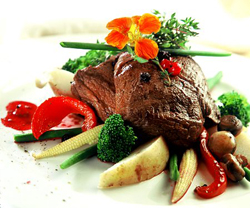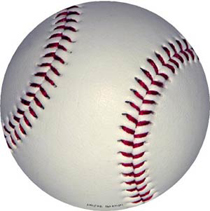
Dominicanembassy.com
This is not the official website of the Dominican Republic
Culture
The culture and people of the Dominican Republic, like its Spanish Caribbean neighbors, is a blend of the cultures of the Spanish colonists, African slaves, and Taíno natives.
European, African and Taíno cultural elements are most prominent in food, family structure, religion and music. Many Arawak/Taíno names and words are used in daily conversation and for many foods native to the DR.
Cuisine
 Dominican cuisine is predominantly made up of a combination of Spanish and African influences over the last few centuries. The typical cuisine is quite similar to what can be found in other Latin American countries, but many of the names of dishes are different. One breakfast dish consists of eggs and mangú (mashed, boiled plantain), a dish that the Dominican Republic shares with Cuba and Puerto Rico. For heartier versions, these are accompanied by deep-fried meat (typically Dominican salami) and/or cheese. Similarly to Spain, lunch is generally the largest and most important meal of the day. Lunch usually consists of rice, some type of meat (chicken, beef, pork, or fish), beans, plantains, and a side portion of salad. "La Bandera" ( The Flag), the most popular lunch dish, consists of meat and red beans on white rice. There is a famous soup "Sancocho" a typical national soup made with seven kind of variety of meats.
Dominican cuisine is predominantly made up of a combination of Spanish and African influences over the last few centuries. The typical cuisine is quite similar to what can be found in other Latin American countries, but many of the names of dishes are different. One breakfast dish consists of eggs and mangú (mashed, boiled plantain), a dish that the Dominican Republic shares with Cuba and Puerto Rico. For heartier versions, these are accompanied by deep-fried meat (typically Dominican salami) and/or cheese. Similarly to Spain, lunch is generally the largest and most important meal of the day. Lunch usually consists of rice, some type of meat (chicken, beef, pork, or fish), beans, plantains, and a side portion of salad. "La Bandera" ( The Flag), the most popular lunch dish, consists of meat and red beans on white rice. There is a famous soup "Sancocho" a typical national soup made with seven kind of variety of meats.
Dominican cuisine usually accommodates all the food groups, incorporating meat or seafood; rice, potatoes, or plantains; and is accompanied by some other type of vegetable or salad. However, meals usually heavily favor starches and meats over dairy products and vegetables. Many dishes are made with sofrito, which is a mix of local herbs and spices sautéed to bring out all of the dish's flavors. Throughout the south-central coast, bulgur, or whole wheat, is a main ingredient in quipes or tipili (bulgur salad). Other favorite Dominican dishes include chicharrón, yuca, casabe, and pastelitos (empanadas), batata, pasteles en hoja, (ground-roots pockets) chimichurris, plátanos maduros (ripe plantain), and tostones.
Some treats Dominicans enjoy are arroz con dulce (or arroz con leche), bizcocho dominicano (lit. Dominican cake), habichuelas con dulce (sweet creamed beans), flan, frío frío (snow cones), dulce de leche, and caña (sugarcane).
The beverages Dominicans enjoy include Morir Soñando, rum, beer, Mama Juana, batida (smoothie), jugos naturales (freshly squeezed fruit juices), mabí, and coffee.
Music
Musically, the Dominican Republic is known for the creation of the musical style called merengue, a type of lively, fast-paced rhythm and dance music consisting of a tempo of about 120 to 160 beats per minute ( varies ) based on musical elements like drums, brass, and chorded instruments, as well as some elements unique to the music style of the DR. It includes the use of the tambora (Dominican drum), accordion, and güira. Its syncopated beats use Latin percussion, brass instruments, bass, and piano or keyboard. Between 1937 and 1950 the merengue music was promoted internationally, by some Dominicans groups like, Billo's Caracas Boys, Chapuseaux and Damiron Los Reyes del Merengue, Joseito Mateo and others. Later on it was more popularized via television, radio and international media, well-known merengue singers include singer/songwriter Juan Luis Guerra, Fernando Villalona, Eddy Herrera, Sergio Vargas, Toño Rosario, Johnny Ventura, and Milly Quezada and Chichi Peralta. Merengue became popular in the United States, mostly on the East Coast, during the 1980s and 90s, when many Dominican artists, among them Victor Roque y La Gran Manzana, Henry Hierro, Zacarias Ferraira, Aventura, Milly, and Jocelyn Y Los Vecinos, residing in the U.S. (particularly New York) started performing in the Latin club scene and gained radio airplay. The emergence of bachata, along with an increase in the number of Dominicans living among other Latino groups in New York, New Jersey, and Florida have contributed to Dominican music's overall growth in popularity.
Bachata, a form of music and dance that originated in the countryside and rural marginal neighborhoods of the Dominican Republic, has become quite popular in recent years. Its subjects are often romantic; especially prevalent are tales of heartbreak and sadness. In fact, the original name for the genre was amargue ("bitterness", or "bitter music", or blues music), until the rather ambiguous (and mood-neutral) term bachata became popular. Bachata grew out of, and is still closely related to, the pan-Latin American romantic style called bolero. Over time, it has been influenced by merengue and by a variety of Latin American guitar styles.
Particularly among the young, a genre that has been growing in popularity in recent years in the Dominican Republic is Dominican rap. Also known as Rap del Patio ("yard rap") it is rap music created by Dominican crews and solo artists. Originating in the early 2000s with crews such as Charles Family, successful rappers such as Lapiz Conciente, Vakero, Toxic Crow, and R-1 emerged. The youth have embraced the music, sometimes over merengue, merengue típico, bachata, as well as salsa, and, most recently, reggaeton. It must be noted that Dominican rap differs from reggaeton in the fact that Dominican rap does not use the traditional Dem Bow rhythm frequently used in reggaeton, instead using more hip hop-influenced beats. As well, Dominican rap focuses on urban themes such as money, women, and poverty, similarly to American rap.
Dominican rock is also popular among the youth. Many, if not the majority, are based in the nation's capital, Santo Domingo.
Sports
 Baseball is by far the most popular sport in the Dominican Republic. After the United States, the Dominican Republic has the second-highest number of Major League Baseball (MLB) players. Some of these players have been regarded among the best in the game. Historically, the Dominican Republic has been linked to MLB since Ozzie Virgil, Sr. became the first Dominican to play in the league. Among the MLB players born in the Dominican are: Manny Ramirez, David Ortiz, Vladimir Guerrero, Pedro Martinez, Albert Pujols, José Reyes, Hanley Ramirez, Miguel Tejada, Juan Marichal, Bartolo Colon, Rafael Furcal, Sammy Sosa, and Robinson Canó.
Baseball is by far the most popular sport in the Dominican Republic. After the United States, the Dominican Republic has the second-highest number of Major League Baseball (MLB) players. Some of these players have been regarded among the best in the game. Historically, the Dominican Republic has been linked to MLB since Ozzie Virgil, Sr. became the first Dominican to play in the league. Among the MLB players born in the Dominican are: Manny Ramirez, David Ortiz, Vladimir Guerrero, Pedro Martinez, Albert Pujols, José Reyes, Hanley Ramirez, Miguel Tejada, Juan Marichal, Bartolo Colon, Rafael Furcal, Sammy Sosa, and Robinson Canó.
Olympic gold medalist and world champion over 400 m hurdles Félix Sánchez hails from the Dominican Republic, as does current defensive end for the San Diego Chargers (National Football League [NFL]), Luis Castillo. Castillo was the cover athlete for the Spanish version of Madden NFL 08.
The National Basketball Association (NBA) also has had players from the Dominican Republic, like Charlie Villanueva, Al Horford and Francisco Garcia . Boxing is one of the more important sports after baseball, and the country has produced scores of world-class fighters and world champions.
Holidays
| Date | Name | |
| January 1 | New Year's Day | Non-working day. |
| January 6 | Catholic day of the Epiphany | Movable. |
| January 21 | Dia de la Altagracia | Non-working day. Patroness Day (Catholic). |
| January 26 | Duarte's Day | Movable. Founding Father. |
| February 27 | Independence Day | Non-working day. National Day. |
| (Variable date) | Holy Week | Working days, except Good Friday. A Catholic holiday. |
| May 1 | Labour Day | Movable. |
| Last Sunday of May | Mother's Day | |
| (Variable date) | Catholic Corpus Christi | Non-working day. A Thursday in May or June (60 days after Easter Sunday). |
| August 16 | Restoration Day | Non-working day. |
| September 24 | Virgen de las Mercedes | Non-working day. A Patroness Day (Catholic) |
| November 6 | Constitution Day | Movable. |
| December 25 | Christmas Day | Non-working day. Birth of Jesus Christ |
Notes:
o Non-working holidays are not moved to another day.
o If a movable holiday falls on Saturday, Sunday or Monday then it is not moved to another day. If it falls on Tuesday or Wednesday, the holiday is moved to the previous Monday. If it falls on Thursday or Friday, the holiday is moved to the next Monday.
About the Dominican Republic
Disclaimer
This website was created by US Legalization to facilitate certifications of documents intended for use in Dominican US Legalization is not affiliated with Embassy of Dominican in Washington DC
1615 Bay Head Rd
Annapolis MD 21409
(410) 349 - 4900
dominican@dominicanembassy.com



